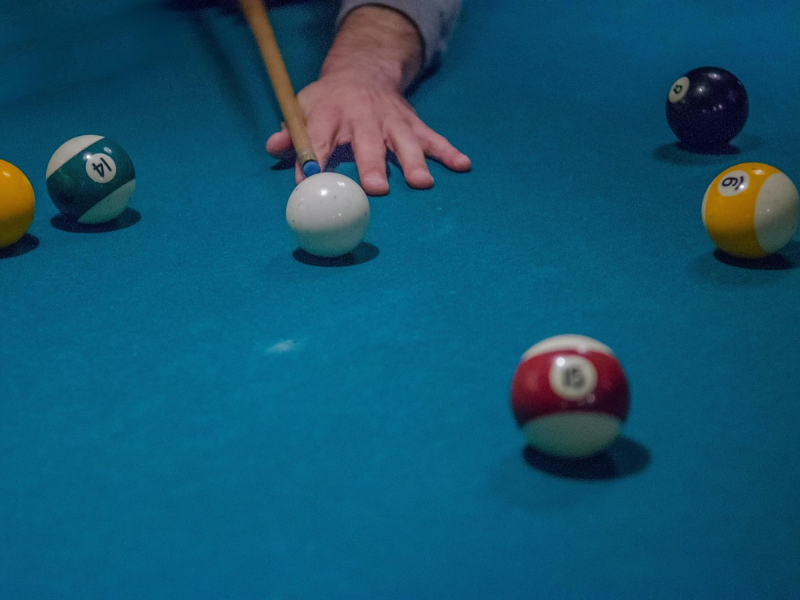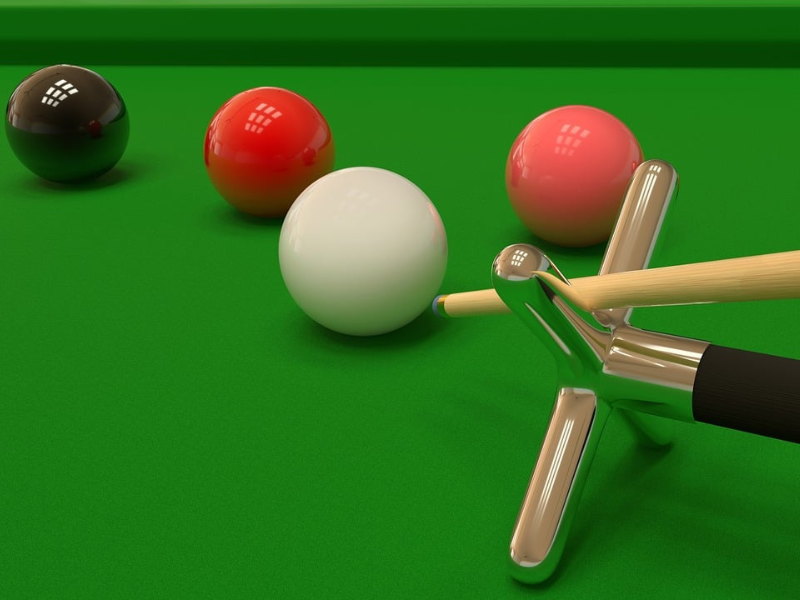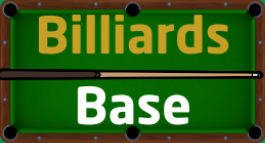Cue sports have captivated players and spectators worldwide for centuries, with snooker and pool standing as two of the most popular variants. Whether you’ve stumbled into a pub with both table types or you’re considering which game to learn, the question “What’s the difference between snooker and pool?” is incredibly common among newcomers to cue sports.
While both games involve using a cue stick to pot colored balls into pockets, the similarities largely end there. From table dimensions and equipment to rules and playing strategies, snooker and pool offer distinctly different experiences that appeal to various skill levels and preferences.
This comprehensive guide will break down the major differences between snooker, pool, and billiards, helping you understand the unique aspects of each game and determine which might be the best fit for your interests and circumstances.
Cue Sports Overview: Snooker, Pool, and Billiards

The Big Three Cue Sports
Snooker originated in British India during the 1870s and became the dominant cue sport throughout the United Kingdom and Commonwealth countries. The game emphasizes tactical play, precision, and mental endurance, with matches often lasting several hours.
Pool (also known as pocket billiards in North America) encompasses various games including 8-ball, 9-ball, and 10-ball. Developed primarily in the United States during the 19th century, pool games typically feature faster-paced action and are more accessible to casual players.
Billiards refers to carom billiards, played on a pocketless table where players score by striking both object balls with the cue ball. While less common in recreational settings, billiards remains popular in Europe and parts of Asia.
Geographic Popularity
- Snooker: Dominates in the UK, Ireland, and former British colonies
- Pool: Most popular in North America, with growing international presence
- Billiards: Traditional strongholds in France, Belgium, and parts of Asia
Table Differences – Size, Markings, and Equipment

Table Dimensions and Markings
The most immediately obvious difference between snooker and pool lies in table size and design.
Snooker Tables:
- Standard size: 12 ft × 6 ft (3.7m × 1.8m)
- Pocket size: Approximately 86mm (3.375 inches)
- Unique markings: D-shaped baulk area, baulk line, and colored ball spots
- Cloth: Fine napped cloth, traditionally green
Pool Tables:
- Common sizes: 7 ft, 8 ft, or 9 ft length
- Standard tournament: 9 ft × 4.5 ft (2.7m × 1.4m)
- Pocket size: Approximately 108mm (4.25 inches) – significantly larger
- Markings: Diamond-shaped sights around the rails
- Cloth: Faster, often worsted cloth in various colors
Billiards Tables:
- Size: Similar to snooker (12 ft × 6 ft)
- No pockets: Completely flat surface
- Markings: Minimal – typically just a center spot and sometimes additional spots
The larger snooker table creates longer shots and more complex angles, while the smaller, more forgiving pool table pockets make potting easier for beginners.
Balls and Cues
Snooker Equipment:
- Balls: 21 balls total (15 red, 6 colored, 1 white cue ball)
- Ball diameter: 52.5mm (2.07 inches)
- Cue length: Typically 57-59 inches
- Cue tip: 9-10mm diameter
- Cue weight: 17-19 oz
Pool Equipment:
- Balls: Varies by game (16 balls for 8-ball, 10 balls for 9-ball)
- Ball diameter: 57.15mm (2.25 inches) – notably larger
- Cue length: Typically 57-58 inches
- Cue tip: 11-14mm diameter – significantly larger
- Cue weight: 18-21 oz
Billiards Equipment:
- Balls: 3 balls total (2 cue balls, 1 object ball)
- Similar dimensions to snooker balls
- Cues: Often longer and lighter than pool cues
The smaller snooker balls and narrower cue tips demand greater precision, while pool’s larger equipment is more forgiving for developing players.
Rules & Goals: How the Games Are Played
Basic Rules
Snooker Gameplay:
- Objective: Score more points than your opponent across multiple frames
- Sequence: Alternate between potting red balls (1 point each) and colored balls (2-7 points)
- Frame completion: After all reds are potted, colors must be potted in ascending order
- Safety play: Deliberately defensive shots are common and strategic
- Match format: Best of multiple frames (often 7, 9, or more in tournaments)
Pool Gameplay (8-Ball Example):
- Objective: Pot your designated group (solids or stripes) then the 8-ball
- Breaking: Games begin with a break shot to spread the balls
- Group assignment: Determined by first ball legally potted after break
- Winning: Successfully pot the 8-ball after clearing your group
- Match format: Often race-to-format (first to win X games)
Billiards Gameplay:
- Objective: Score points by making caroms (cue ball contacts both object balls)
- No potting: All scoring done by ball-to-ball contact
- Point accumulation: Games typically played to set point totals (50, 100, etc.)
- Continuous play: Players continue shooting until they miss
Gameplay Pace, Techniques & Strategies
Snooker emphasizes:
- Tactical positioning: Setting up difficult snookers (impossible shots) for opponents
- Long-term planning: Thinking several shots ahead
- Cue ball control: Precise positioning for the next shot
- Mental endurance: Frames can last 20-60 minutes
- Break-building: Scoring multiple balls in sequence
Pool focuses on:
- Shot-making: Direct potting ability
- Pattern play: Planning efficient ball clearance routes
- Speed: Games typically completed in 5-15 minutes
- Break shots: Powerful opening shots to spread balls
- Risk management: Choosing between offensive and defensive plays
The pace difference is perhaps most striking – snooker rewards patience and methodical play, while pool often favors aggressive shot-making and quicker decision-making.
Key Differences Summarized
| Aspect | Snooker | Pool (8-Ball) | Billiards |
| Table Size | 12 ft × 6 ft | 7-9 ft × 3.5-4.5 ft | 12 ft × 6 ft |
| Pocket Size | 86mm (narrow) | 108mm (generous) | No pockets |
| Number of Balls | 21 | 16 | 3 |
| Ball Size | 52.5mm | 57.15mm | 52.5mm |
| Typical Game Length | 20-60+ minutes | 5-15 minutes | Variable |
| Primary Skills | Tactics, positioning | Shot-making, patterns | Precision, angles |
| Scoring System | Point accumulation | Group clearance | Carom points |
| Break Importance | Moderate | High | N/A |
| Safety Play | Essential | Optional/situational | Rare |
Which Game Should You Play?
Choosing Based on Your Preferences
Choose Snooker if you:
- Enjoy strategic, methodical gameplay
- Have access to a full-size snooker table
- Appreciate mental challenges and tactical thinking
- Don’t mind longer game sessions
- Want to develop precise cue ball control
Choose Pool if you:
- Prefer faster-paced games
- Have limited time for recreational play
- Want more accessible equipment and venues
- Enjoy direct shot-making challenges
- Are new to cue sports
Choose Billiards if you:
- Love pure precision and geometric thinking
- Want to master advanced cue ball control
- Enjoy traditional, classical games
- Have access to specialized equipment
Practical Considerations
Space Requirements:
- Snooker requires significantly more room (minimum 22 ft × 16 ft)
- Pool tables fit in smaller spaces (16 ft × 12 ft for 8 ft table)
- Consider ceiling height for proper cueing
Equipment Availability:
- Pool tables are more common in most countries
- Snooker equipment may be harder to find outside Commonwealth countries
- Quality varies significantly between recreational and professional setups
Snooker, Pool, and Billiards in Popular Culture
Tournament Prestige
Snooker boasts the World Snooker Championship at Sheffield’s Crucible Theatre, often called the “Theatre of Dreams.” The tournament has been held annually since 1977 and represents the pinnacle of professional snooker, with champions like Ronnie O’Sullivan, Stephen Hendry, and Steve Davis becoming household names in the UK.
Pool features multiple world championships, including the WPA World Nine-ball Championship and World Pool Masters. American legends like Willie Mosconi and contemporary stars like Shane Van Boening have elevated pool’s profile globally.
Billiards maintains its tradition through the UMB World Three-cushion Championship, particularly strong in European and Asian markets.
Media Presence
Snooker enjoys extensive television coverage, particularly on BBC and Eurosport, while pool has found success on streaming platforms and specialized sports networks. Both sports have benefited from YouTube highlight reels showcasing incredible shots and tournament drama.
FAQ Section
What is the biggest difference between pool and snooker?
The most significant difference is table size – snooker tables are substantially larger (12 ft vs 9 ft maximum for pool), creating longer shots and more complex positioning challenges. Additionally, snooker emphasizes tactical safety play while pool focuses more on direct potting.
Is snooker harder than pool?
Snooker is generally considered more challenging due to smaller pockets, longer shots, more complex rules, and greater emphasis on position play. However, pool has its own technical demands, and difficulty often depends on the specific variant and competitive level.
Can you play both games on the same table?
Pool can be played on a snooker table, though the larger size changes the game dynamics significantly. Snooker cannot be properly played on a standard pool table due to insufficient space and different pocket proportions.
What’s the difference between billiards and pool?
“Billiards” strictly refers to carom games played on pocketless tables, while “pool” refers to pocket billiard games. However, in casual American usage, “billiards” is sometimes used as a general term for all cue sports.
Why are snooker balls smaller?
The smaller snooker balls increase precision requirements and make potting more challenging, aligning with snooker’s emphasis on skill and accuracy. The size difference also complements the narrower pockets and larger table proportions.
Next Steps
Understanding the differences between snooker, pool, and billiards helps you appreciate each game’s unique appeal and challenges. Snooker rewards tactical thinking and precision, pool emphasizes shot-making and faster play, while billiards focuses on pure cue ball control and geometric precision.
The best way to determine your preference is to try each game when possible. Many venues offer both snooker and pool tables, allowing you to experience the different table sizes, equipment, and playing styles firsthand.
Whether you’re drawn to snooker’s cerebral challenges, pool’s accessibility, or billiards’ classical precision, each cue sport offers a lifetime of learning and improvement. Start with the game that appeals most to your circumstances and interests – you can always expand your skills to other variants later.
